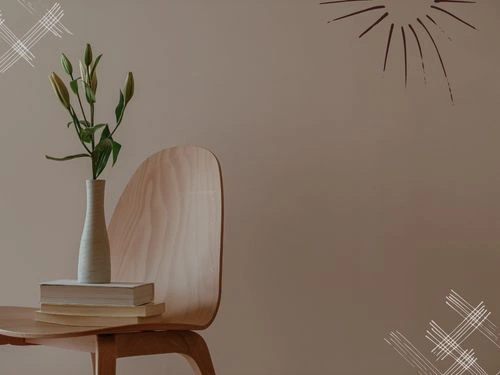Wooden furniture adds warmth, character, and elegance to any home. Its timeless beauty makes it a favorite for both indoor and outdoor spaces. Proper care is crucial, especially in humid climates, where moisture can cause warping, cracking, and mold. Following the right maintenance techniques helps preserve wooden furniture, keeping it beautiful and durable for years. This guide shares practical tips, strategies, and preventative measures to maintain wooden pieces in top condition.
Understanding Wood and Humidity
Wood is a living, natural material, and its beauty comes with a sensitivity to environmental conditions. Unlike synthetic materials, wood continuously responds to its surroundings. In humid climates, moisture from the atmosphere seeps into the wood fibers, causing them to swell. This expansion can make drawers stick, make doors harder to close, and, in severe cases, warp tabletops or chair legs. Conversely, when the air becomes dry, wood loses moisture, contracts, and may develop gaps between joints or even small cracks along the surface. Over time, this constant cycle of expansion and contraction weakens the structural integrity of furniture if not properly managed.
Not all wood reacts to humidity in the same way. Hardwoods such as teak, mahogany, oak, and rosewood have denser grain structures, making them more resistant to moisture and less prone to warping or splitting. Softwoods like pine or cedar are more susceptible to changes, so they require extra attention in humid environments. Even the type of finish applied can influence how well a piece withstands moisture. For instance, varnished or lacquered surfaces offer some protection against water absorption, while unfinished or lightly oiled wood may require more frequent maintenance to prevent damage.

High humidity not only affects the wood’s structure but also its surface condition. Excess moisture can create the perfect environment for mold, mildew, and fungi to thrive. These organisms leave visible stains, produce unpleasant odors, and in severe cases, can compromise the wood’s integrity. On the other hand, overly dry conditions cause the wood to shrink and lose flexibility, making it brittle and prone to splitting, especially at joints and corners. The key to preserving wooden furniture in any climate is to maintain a balanced environment. This means controlling humidity, ensuring good ventilation, and combining these efforts with proper cleaning, finishing, and routine maintenance. With careful attention, even delicate or older wooden pieces can remain beautiful and functional for generations.
Ultimate Guide to Preserve Wooden Furniture in Humidity
1. Regular Cleaning and Dusting
One of the simplest ways to care for wooden furniture is to clean it regularly. Dust, dirt, and grime can accumulate over time, dulling the wood’s natural finish. Use a soft, dry microfiber cloth to remove dust at least once a week. Avoid using rough cloths or abrasive materials that can scratch the wood.
For a deeper clean, slightly dampen a cloth with water or a mild soap solution. Wipe the surface gently, then dry immediately with a soft cloth. Avoid leaving water on the surface, as prolonged moisture can seep into the wood, especially in humid climates, leading to swelling and staining.
Avoid harsh chemical cleaners, as these can strip the wood of its natural oils and damage the finish. Instead, use products specifically formulated for wood care when necessary, particularly for polished or varnished surfaces.
2. Controlling Humidity Levels
Maintaining consistent humidity levels is one of the most effective ways to protect wooden furniture in humid climates. Ideally, indoor humidity should stay between 40 and 55 percent. High humidity levels can cause wood to swell, while very low humidity levels can cause it to crack.
Investing in a dehumidifier can be especially helpful in tropical regions or during rainy seasons. Dehumidifiers remove excess moisture from the air, reducing the risk of warping and mold growth. In contrast, if the air becomes too dry, especially during winter months, using a humidifier can prevent cracking and shrinking.
Monitoring humidity levels with a hygrometer provides valuable insight into your home’s conditions. This allows you to adjust your indoor climate before your furniture suffers damage.
3. Avoiding Direct Sunlight
Sunlight can enhance a room’s beauty, but it can also damage wooden furniture over time. Prolonged exposure to direct sunlight causes the wood to fade, dry out, and sometimes even crack. In humid climates, sun-exposed wood may expand more rapidly in the heat, increasing the risk of warping.
To protect your furniture, place pieces away from direct sunlight when possible. Use curtains, blinds, or UV-protective window films to minimize exposure. Rotating furniture periodically also ensures that neither side experiences uneven fading or damage.
4. Using Protective Finishes
Applying a protective finish is essential for wooden furniture in humid environments. Finishes such as varnish, lacquer, or polyurethane act as a barrier against moisture, dirt, and stains. Wax finishes provide a natural look while offering moderate protection, but require more frequent maintenance.
For outdoor furniture, consider oils like teak oil or tung oil, which penetrate the wood and protect it from moisture without forming a hard surface layer. These finishes need reapplication at least once, and possibly twice, a year, depending on exposure and usage.
Regularly checking the finish’s condition ensures cracks or peeling are addressed promptly, preventing moisture from penetrating the wood.

5. Handling Spills and Stains Promptly
Spills are inevitable, but how you respond can make all the difference. Liquids left on wooden surfaces can seep into the wood, causing stains, swelling, or permanent damage. Always blot spills immediately with a soft cloth. Avoid rubbing, as this can spread the liquid and damage the finish.
For tough stains, a mixture of mild soap and water or a specially formulated wood cleaner can help. For water rings or light surface damage, gently rub the area with a paste of baking soda and water, or use a commercial wood repair product, to restore the surface.
6. Proper Placement and Ventilation
Where you place your furniture matters as much as how you maintain it. Avoid placing wooden furniture directly against exterior walls in humid climates, as these areas tend to retain moisture. Keep furniture away from air conditioning vents or heaters, as they can cause rapid changes in temperature and humidity.
Ensuring proper airflow around furniture reduces the risk of mold growth and prevents moisture from becoming trapped. Using furniture pads or feet slightly elevates pieces off the floor, which is especially important in areas prone to condensation.
7. Regular Polishing and Oiling
Polishing and oiling are key steps in maintaining wooden furniture. Polishing removes surface dirt, enhances shine, and provides a protective layer. Use high-quality furniture polish sparingly and follow the manufacturer’s instructions.
Oiling is particularly important for untreated or lightly finished wood. Oils penetrate the wood, nourishing it and maintaining its natural flexibility. Depending on the wood type and climate, re-oiling may be required every few months to prevent drying and cracking.
8. Repairing Minor Damage Early
Even with careful maintenance, wooden furniture can experience minor damage. Cracks, scratches, and loose joints should be addressed as soon as they appear. Small scratches can often be fixed with wood markers or wax sticks that match the furniture’s color. Loose joints may require glue or tightening screws, depending on the piece.
Repairing minor damage promptly prevents it from worsening and reduces the need for costly restorations later.
9. Seasonal Care Adjustments
Different seasons bring different challenges for wooden furniture. In humid summers, the focus should be on controlling moisture and preventing mold. Using dehumidifiers, fans, and air conditioning can help. In dry winters, maintaining moisture balance is crucial to prevent wood from drying out and cracking. Humidifiers or placing water trays near heating systems can help maintain a stable environment.
Adjusting your care routine with the seasons helps keep your furniture in optimal condition year-round.
10. Caring for Outdoor Wooden Furniture
Outdoor wooden furniture faces additional challenges, including rain, sun, and fluctuating humidity. Choosing durable hardwoods like teak, cedar, or eucalyptus provides natural resistance to moisture and decay. Applying outdoor wood sealants and oils enhances protection, while using furniture covers when not in use shields pieces from harsh weather.
Regular cleaning of outdoor furniture is also essential. Rinse off dirt and debris with water, gently scrub with a soft brush if needed, and reapply protective finishes to maintain the wood’s natural luster.
Tips for Long-Term Preservation
Maintaining wooden furniture involves daily care, preventive measures, and periodic upkeep. Here are some final tips for long-term preservation:
- Rotate furniture periodically to avoid uneven fading or moisture exposure.
- Use coasters, placemats, and tablecloths to protect surfaces from spills and heat.
- Avoid placing heavy objects in a way that could stress joints or warp the wood.
- Keep indoor plants so that excess moisture does not come into contact with wood surfaces.
- Inspect furniture regularly for signs of mold, mildew, or insect damage.
By integrating these practices into your routine, wooden furniture can remain a beautiful, functional part of your home for decades.
Preserving Wooden Furniture in Humid Climates
Maintaining wooden furniture in humid climates may seem challenging, but with the right approach, it is entirely manageable. Understanding how wood reacts to moisture, controlling humidity levels, and performing regular cleaning and protective maintenance are key strategies. Paying attention to placement, sunlight exposure, and seasonal adjustments will further extend the life of your furniture.
Wooden furniture is an investment in both aesthetics and function. Proper care ensures that these pieces retain their charm, durability, and value over time. Whether it is a beloved dining table, a handcrafted cabinet, or a cherished outdoor chair, these practical tips can help your wooden furniture withstand the challenges of humid climates while continuing to enhance your living space.





